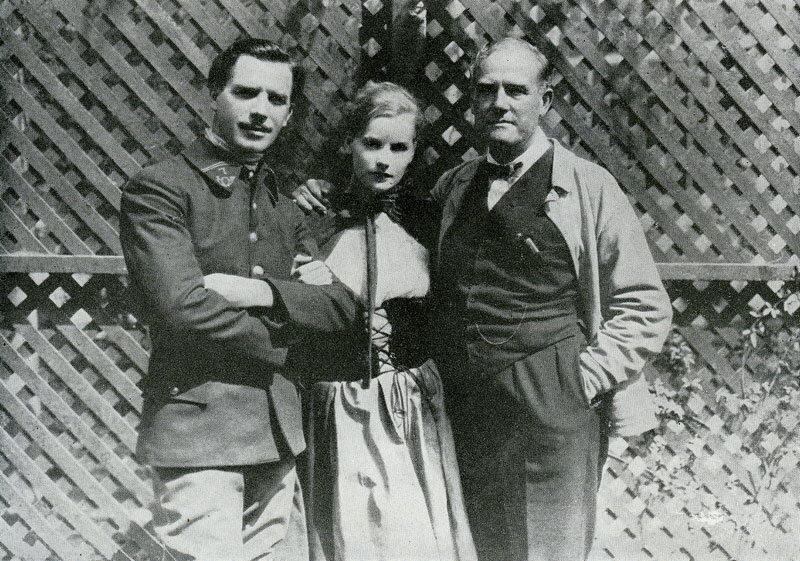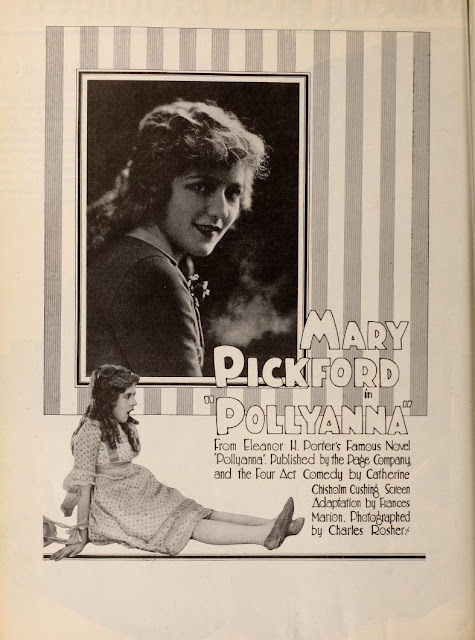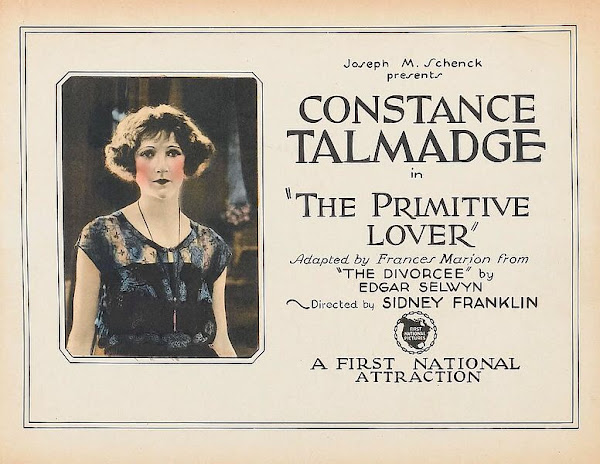
Scott Lord on the Silent Film of Greta Garbo, Mauritz Stiller, Victor Sjostrom as Victor Seastrom, John Brunius, Gustaf Molander - the Golden Age of Swedish Silent Film........Lost Films in Found Magazines, among them Victor Seastrom directing John Gilbert and Lon Chaney, the printed word offering clues to deteriorated celluloid, extratextual discourse illustrating how novels were adapted to the screen; the photoplay as a literature;how it was reviewed, audience reception perhaps actor to actor.
Wednesday, March 23, 2022
Tuesday, March 22, 2022
Scott Lord Silent Film: Mary Pickford as Pollyanna (Powell, 1920)






In addition to one of the most beautiful films made by Mary Pickford, “Pollyanna” (Paul Powell, six reels), during 1920 Pickford also made the film “Suds” (five reels) under the direction of Francis Dillon. The former also stars William Courtleigh, the latter William Austin
Silent Film Mary Pickford Mary Pickford
Wednesday, March 2, 2022
Writing the Photoplay
One automatically wonders what was entailed in the writing of photoplays when coming across the term "spot continuity". It was described during 1923 as a script writing technique of making a brief outline listing only the "big situations" or "highspots" in the storyline of a silent film. That year "continuity" was described as the indispensible "director's guide", a transcription of the story with division of scene indicated and specific shots, inserts, perhaps dissolves, being noted, as in a "continuity script". A continuity writer would be assigned to construct it from the scenario, which would be amended by a "scene plot", an itemized list of scenes designating their respective sets and locations.
A manual for the photoplaywright, written a year earlier during 1922, giving the scenario as being "a play in scenes" and the "continuity writer" as a dramaturgist, described "scenarist" as a generic synonym for playwright of screen dramatist. A "synoptist" was responsible for a detailed synopsis, the legnth of which was that of a short story, and it detailed the dramatic story without dialougue. Continuity and synopsis were the same, differing only in dramatic description, the former being scenario, the latter synoptic narrative.
The manual advised the photoplawright that complications should be limited when constructing underplots or cross plots in order to achieve a plot unity and a unity of structure.
Scenario credits, although more often than not having been given to a screenwriter, frequently were shared with the film's director or given solely to the director. Magazine advertisements in 1922 for the film "Notoriety" promoted the film by giving Clara Beranger credit for having written the story especially for director William De Mille. D. W. Griffith
Silent Film Movie Posters
A manual for the photoplaywright, written a year earlier during 1922, giving the scenario as being "a play in scenes" and the "continuity writer" as a dramaturgist, described "scenarist" as a generic synonym for playwright of screen dramatist. A "synoptist" was responsible for a detailed synopsis, the legnth of which was that of a short story, and it detailed the dramatic story without dialougue. Continuity and synopsis were the same, differing only in dramatic description, the former being scenario, the latter synoptic narrative.
The manual advised the photoplawright that complications should be limited when constructing underplots or cross plots in order to achieve a plot unity and a unity of structure.
Scenario credits, although more often than not having been given to a screenwriter, frequently were shared with the film's director or given solely to the director. Magazine advertisements in 1922 for the film "Notoriety" promoted the film by giving Clara Beranger credit for having written the story especially for director William De Mille. D. W. Griffith
Silent Film Movie Posters
Subscribe to:
Posts (Atom)
















